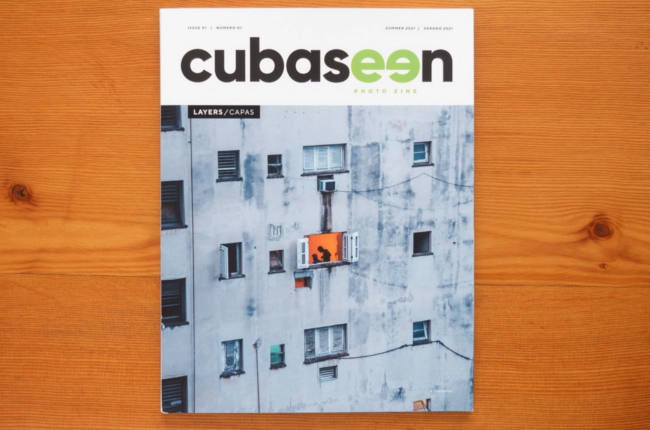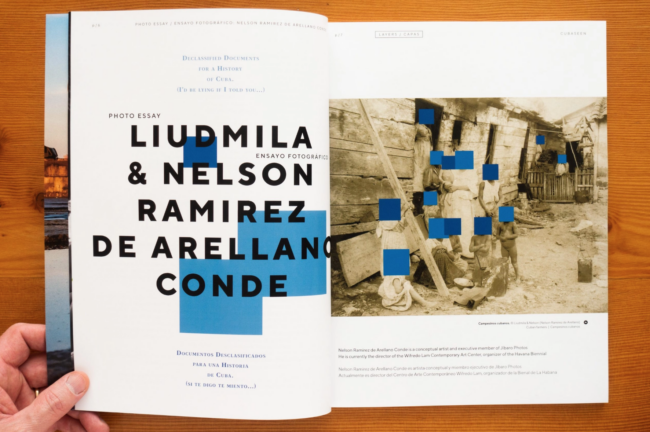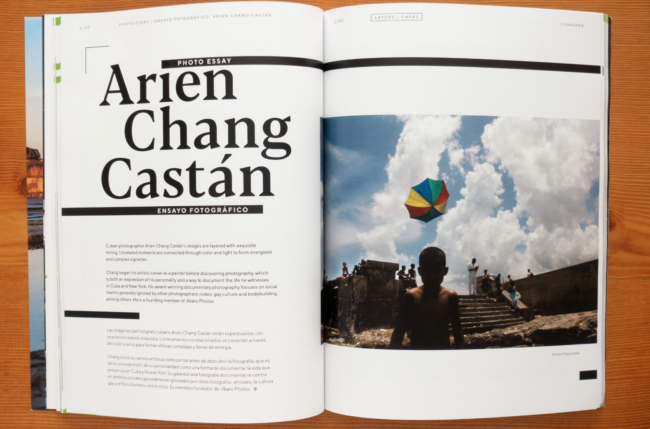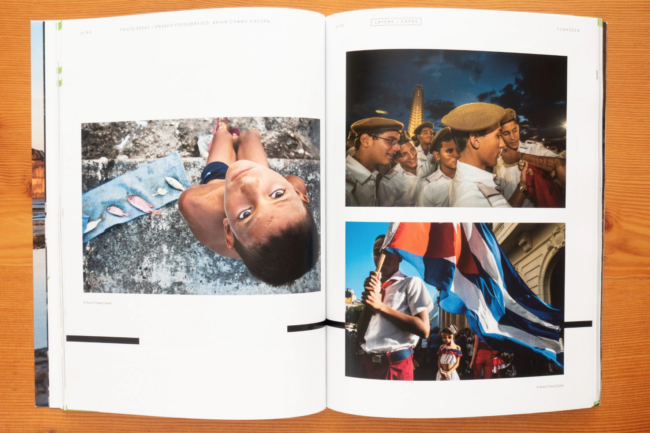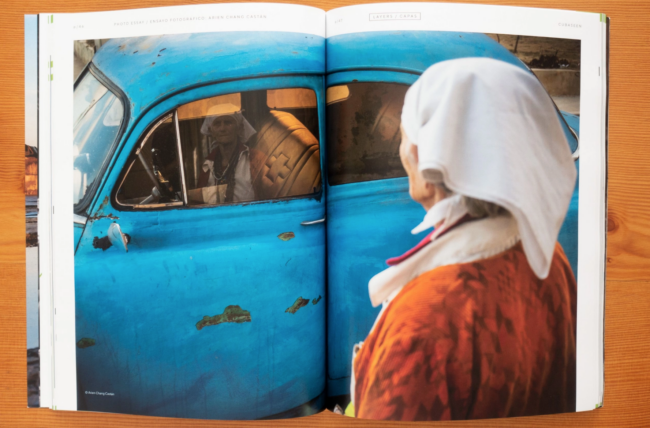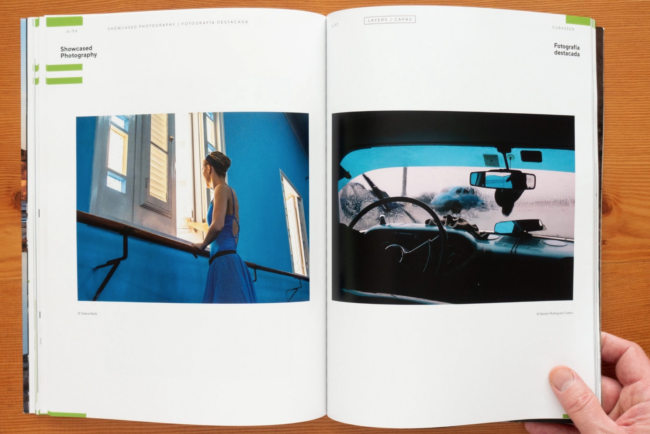Cover Photography by Tynan Daniels
Photograph by Donna Kross
Photo Essay by Luidmila and Nelson Ramirez de Arellano Conde
Photo Essay by Arien Chang Castán
Photograph by Debra Wells (Left) and Sandor Rodriguez Castro (Right)
CubaSeen
Co Founder and Publishers: Jennifer Spelman and Andrew Child
Heidi: How did this idea come about, did the pandemic have an influence?
Jennifer: After travel came to a sharp halt I started teaching online courses with Santa Fe. One was on creating Zines – lots of fun to deep dive into projects, sequencing and designing after so many years just focusing on capturing images. Somewhere mid-pandemic a friend and fellow photographer, Andrew Child approached me with an idea of co-publishing a zine showcasing Cuban and US photographers together on one platform.
Why Cuba?
Cuba is a place it’s hard to visit and not genuinely get attached to the people. It’s also a place it’s hard to understand through simple news headlines. It’s culture is layered in complexity, due to both politics and isolationism. We appreciate the strong commitment to the arts and music Cuba has always held. Our magazine is trying to provide a deeper lens into the happenings on the island and testing whether art and written words can actually help broaden perspectives. There are countless photos of Cuba sitting idle on the hard drives of talented photographers who have visited the country through people-to-people and support of the Cuban people programs. We provide a unique platform to share those photos and pair them with the work of Cuban photographers in a way that is thoughtful, creative, and exposes truths about both our cultures.
Is there any call to action for the magazine?
CubaSeen exists at the intersection of both U.S. and Cuban governments recognizing the value of artists connecting across national boundaries. Distribution includes key members of the U.S. Congress and Biden Administration foreign policy officials. “We’re not political but we do want decision makers in Washington to understand the value of people-to-people interactions between artists during this time of strained relations between the U.S. and Cuba. CubaSeen is not just about beautiful photography, it’s about people forming friendships, the cross pollination of creative ideas, and debunking the myths we hold about each other in both countries.” Andrew Child
We are hopeful people will share the magazine with friends and fellow photographers and that our magazine can achieve what news headlines are often unable to do – giving a face to the people. Our distribution also includes a range of galleries and curators within the art world in hopes that the exposure will lead to other exhibits and more traction for the artists collectively.
How did you spread the word for call in to entries in both countries?
So far everything has been by word of mouth and social media. We’ve reached out to photographers from Cuba and the US for entries and all have been eager to participate. We’re encouraged by the range of visual voices – from amateurs to professionals. We’ve now started getting submissions from all over the world and are excited by the depth in perspectives. It’s fun to see the difference in work that comes from outsiders looking into Cuba and insiders looking out from Cuba.
Are you creating diptychs with US based images and Cuban images?
We put a lot of focus into crafting the most dynamic page spreads we can – creating unexpected relationships and challenging juxtapositions between images. We understand that the meaning of an image can be influenced by what image it appears next to it and are enjoying editing the work to create these types of pairings. We are letting the imagery drive these relationships – sometimes they are between a Cuban and US photographer, sometimes two Cubans, sometimes work from photographers in other parts of the world. Andrew shared with me, “I see reactions from people who have not been to Cuba, I get the sense that those pairings and juxtapositions which Jennifer describes still resonate. The subject is always Cuba, but there’s plenty in the zine for anyone who just appreciates great photography.”
What are the themes based on?
The themes are meant to encourage imagery beyond the standard cliches of Cuba. Our first theme of LAYERS was a tribute to the long history of powerful street photography in Cuba and the complex cultural layers within the island. Our next theme of PERSONAS was meant to amplify and personify the voices of the people of Cuba during a summer of incredible internal and external political unrest. Our current theme of “UNEXPECTED CUBA” is about celebrating the moments that delight, surprise and endear us to the island. We are excited to see what kind of photographs it yields.
It’s so inspiring to see all these collectives popping up.
We agree-it’s been beyond cool to see the cooperative endeavors that came out of us all having a little time to slow down and actually talk about ideas together. The very best part of CubaSeen has been working together with the most dynamic team Andrew and I could assemble. We have a copy editor/translator who brings extensive experience in publication, two Cuban designers who’ve helped craft the CubaSeen brand and weave the Cuban aesthetic into each page and a dynamic Cuban writer and US writer. Those folks combined with each of our rotating photo essayists and the over 100 photographers who’ve submitted work to each issue creates a synergy of visual thoughts far beyond what any individual perspective could do. Many times throughout the last year Andrew and I have remarked on the collaborative part of CubaSeen being the most fun and powerful part of the project.
Our next call for entries is on “Unexpected Cuba” and submissions are due by November 9th. Anything we can do to encourage submissions from folks who have visited Cuba would be great – https://cubaseen.com/submissions-03/
